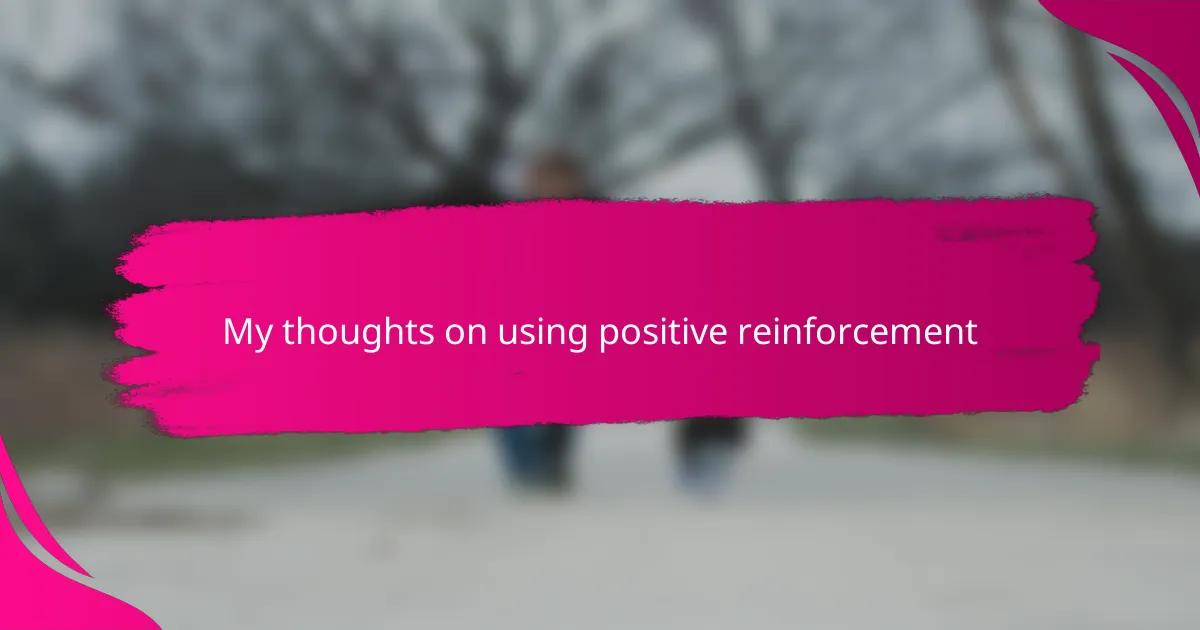Key takeaways
- Positive reinforcement builds confidence and cooperation by recognizing children’s efforts, encouraging them to repeat positive behaviors.
- Immediate and specific praise enhances the connection between the desired behavior and reward, fostering motivation.
- Consistency in providing positive feedback deepens trust and promotes independent behavior over time.
- Overcoming challenges in positive reinforcement requires patience, focus on effort rather than perfection, and adapting strategies to each child’s unique needs.
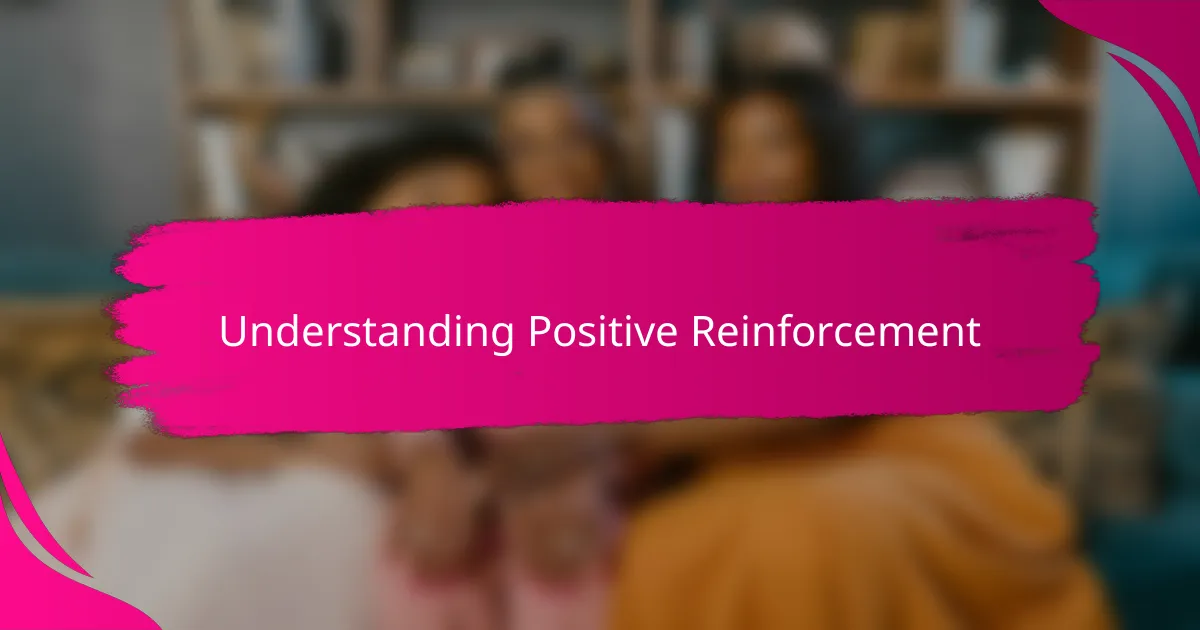
Understanding Positive Reinforcement
Positive reinforcement, to me, is all about encouraging the behaviors we want to see by rewarding them. It’s not just about giving a treat or praise; it’s about recognizing and celebrating the efforts our children make, no matter how small. Have you ever noticed how a simple “well done” can light up a child’s face and motivate them to try again?
I remember a time when my child struggled with bedtime routines. Instead of focusing on the frustration, I started praising even the tiniest steps—like putting on pajamas or brushing teeth without a fuss. That shift changed everything. It made me realize how powerful positive reinforcement can be in building confidence and cooperation.
What I appreciate most is that positive reinforcement nurtures a sense of trust and connection. It’s not about control but about guiding our children with kindness and encouragement. Don’t you think that’s a gentler, more effective way to shape behavior than criticism or punishment?
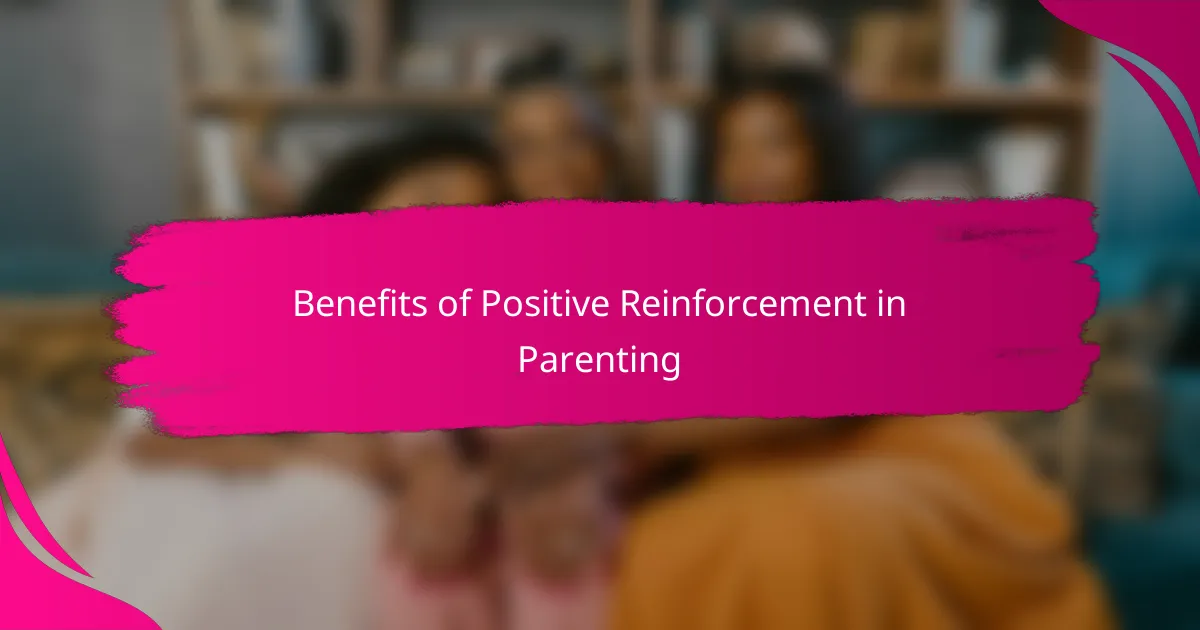
Benefits of Positive Reinforcement in Parenting
One of the biggest benefits I’ve seen with positive reinforcement is how it boosts my child’s self-esteem. When I acknowledge their good choices, they start to believe in their abilities more. Have you noticed how kids seem more eager to repeat behaviors that get them genuine praise? That confidence makes a world of difference in their willingness to try new things.
Positive reinforcement also transforms our daily interactions. Instead of constant reminders and nagging, moments become filled with encouragement. I found that this approach reduces power struggles and creates a more harmonious relationship. Doesn’t it feel better to focus on what our kids are doing right rather than what they’re doing wrong?
What truly strikes me is how positive reinforcement helps build lasting habits. By consistently celebrating effort and progress, children learn to internalize good behaviors rather than just follow rules to avoid punishment. From my experience, this leads to more independent and responsible kids over time—a goal I’m sure every parent shares.
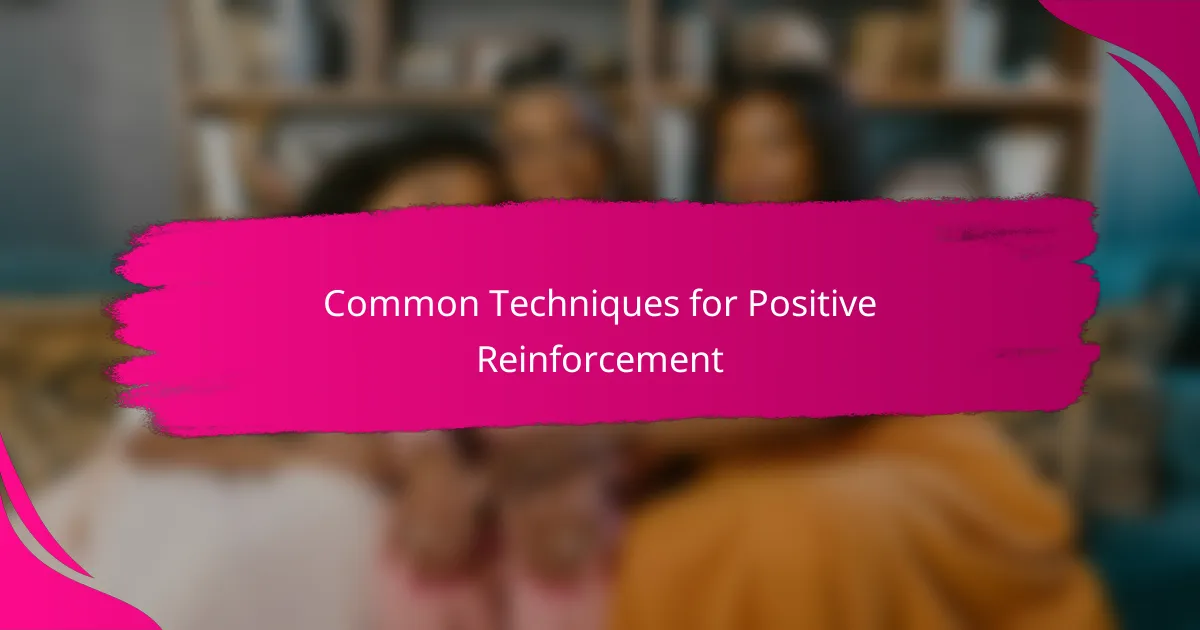
Common Techniques for Positive Reinforcement
One technique I often use is verbal praise. Simply saying “great job” or “I’m proud of you” when my child does something positive creates an immediate connection and encourages them to keep it up. Have you noticed how these little words can brighten their mood and motivate them more than any material reward?
Another method that works well for me is setting up a reward system, like sticker charts or small tokens for good behavior. Tracking progress visually helps kids see their achievements and feel proud, which is incredibly motivating. It’s amazing how even young children respond to seeing their efforts recognized in a tangible way.
I also find that offering choices is a subtle but powerful form of positive reinforcement. When I let my child pick between two good options, it gives them a sense of control and encourages cooperation. Don’t you think empowering kids like this makes them more willing to follow routines and rules?
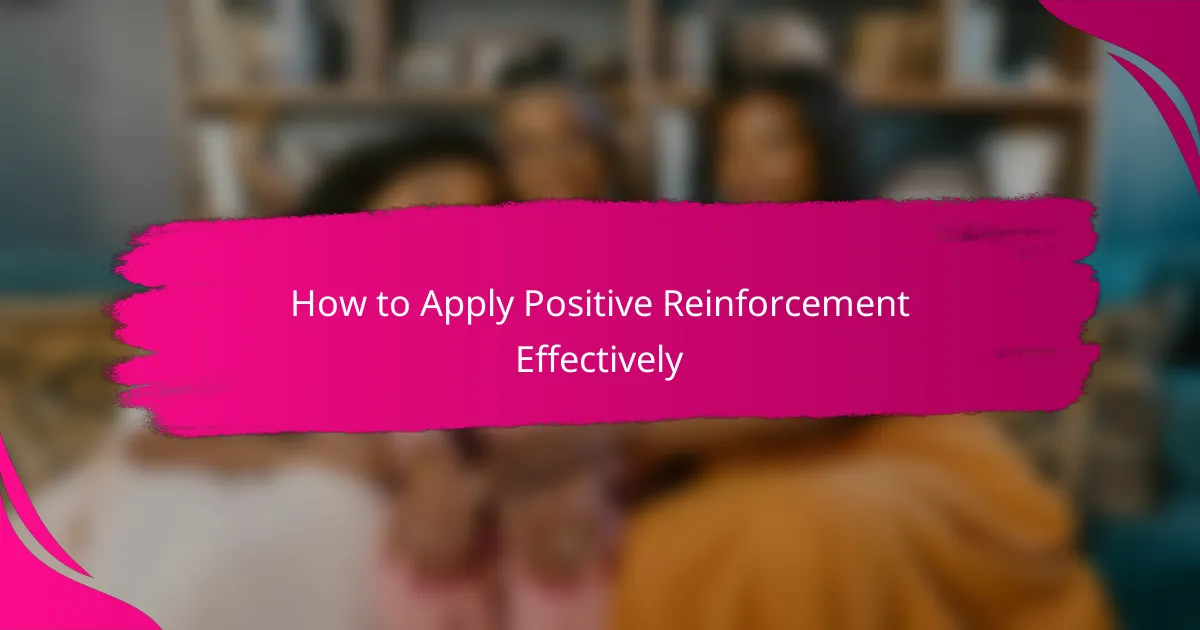
How to Apply Positive Reinforcement Effectively
When I apply positive reinforcement, timing is everything. Praising my child immediately after the desired behavior helps them connect the action with the reward—waiting too long can make the praise feel less meaningful. Have you ever caught yourself saying “good job” hours later and wondered if it made any difference? I have, and I realized that being present in the moment is key.
Consistency is another aspect I can’t stress enough. At first, it felt exhausting to catch and reward every good behavior, but sticking with it paid off. Over time, my child started seeking out positive feedback naturally, which felt like such a win. How often do we underestimate the power of steady encouragement?
I’ve also learned to tailor my reinforcement to what truly motivates my child. Sometimes a hug speaks louder than words, while other times a small privilege feels like a big reward. What works wonders for one child might not work for another—so tuning in to their unique needs makes all the difference. Have you noticed how personalized praise can deepen your connection with your child? It’s something I treasure in my parenting journey.
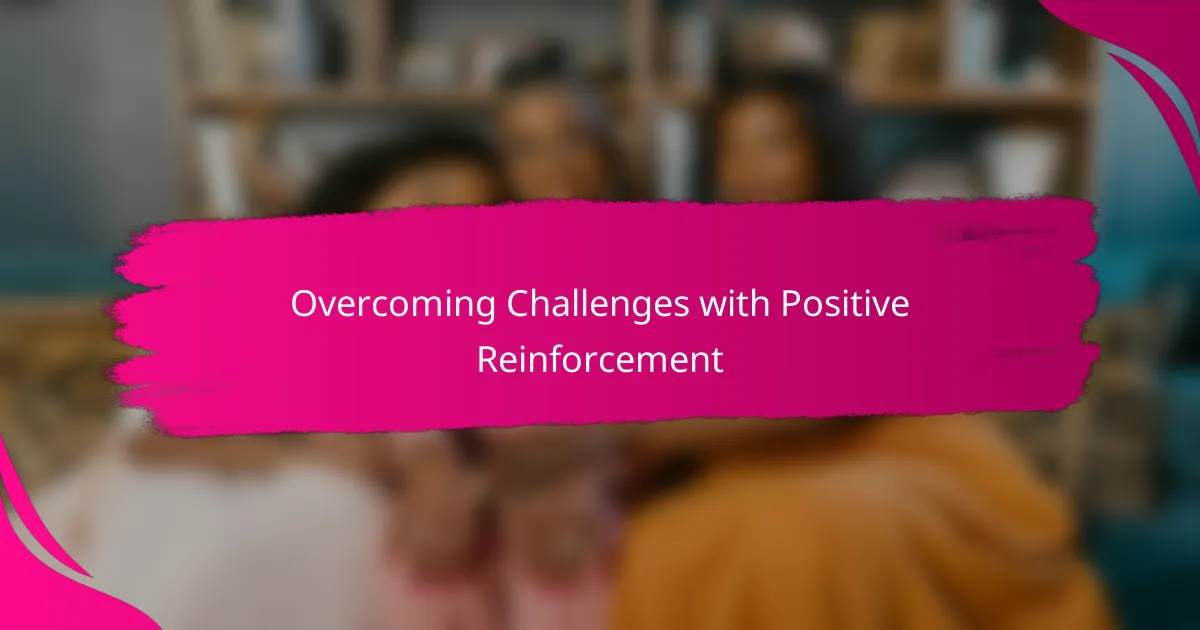
Overcoming Challenges with Positive Reinforcement
Challenges definitely pop up when using positive reinforcement, especially when results aren’t immediate. I remember feeling frustrated when my child didn’t respond right away, but I learned patience was key. Have you ever struggled to keep encouraging when progress feels slow? Sticking with it, even during setbacks, helped build trust and eventually led to breakthroughs.
Sometimes, it’s hard to find the right balance between praise and overdoing it. Early on, I worried that too much praise might spoil my child or make them dependent on rewards. But I realized that genuinely acknowledging effort, rather than just outcomes, kept things meaningful. What if we focused more on effort than perfection? That shift made a big difference for us.
Another hurdle I faced was staying consistent amid busy days or stress. Positive reinforcement requires attention and intentionality, which can be tough to maintain. I found that setting small reminders or routines helped me stay on track without feeling overwhelmed. Have you found ways to keep positive reinforcement alive even when life gets hectic? It’s a challenge worth meeting because the benefits are so rewarding.
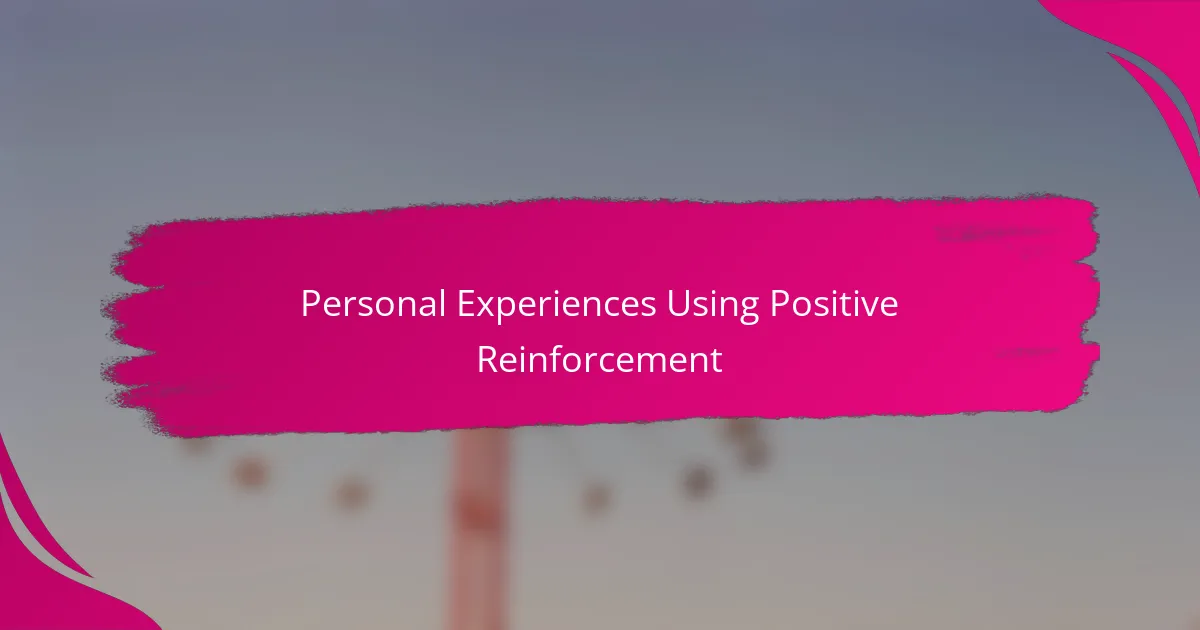
Personal Experiences Using Positive Reinforcement
I recall a moment when my daughter eagerly tried to tie her shoes for the first time. Instead of jumping in to fix it, I cheered her attempts with genuine excitement. That simple encouragement made her light up and try repeatedly, even when it got tough—proving to me how reinforcing effort can ignite determination.
There was also a time when my son showed kindness to a sibling without being prompted. I praised him sincerely in front of the family, and I noticed how that recognition made him more aware of his positive actions. Isn’t it amazing how kids respond when their good deeds are noticed and valued?
However, I’ve learned that positive reinforcement is not a magic fix; it takes patience. Some days, it felt like my words barely registered, and I almost gave up. But keeping faith, even during frustrating moments, led to gradual but meaningful changes. Have you ever found that persistence in encouragement eventually pays off? I certainly have.
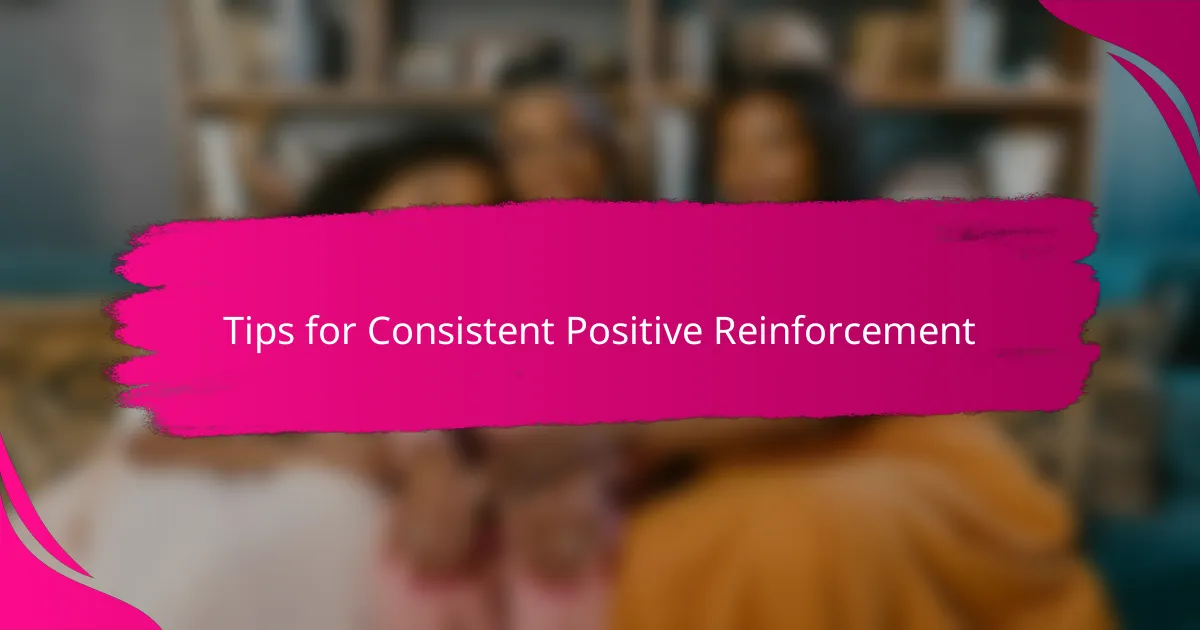
Tips for Consistent Positive Reinforcement
One tip I’ve found crucial is to keep praise specific and genuine. Instead of a generic “good job,” I try to highlight exactly what my child did well, like “I love how you cleaned up your toys without being asked.” Don’t you think that kind of focused acknowledgment makes the praise feel more real and motivating?
Another thing that helped me stay consistent was setting small reminders for myself. On busy days, I’d sometimes forget to notice the little victories, but a quick note on my phone or a sticky note on the fridge brought me back to the habit. Have you ever caught yourself slipping into old patterns and had to find little tricks like this to stay intentional?
I also discovered that combining positive reinforcement with predictable routines worked wonders. When my child knew what to expect and saw that good behavior consistently earned praise, it created a sense of security and trust. From your experience, doesn’t consistency in both actions and reactions help kids feel more confident in trying their best? I certainly saw that in my home.
